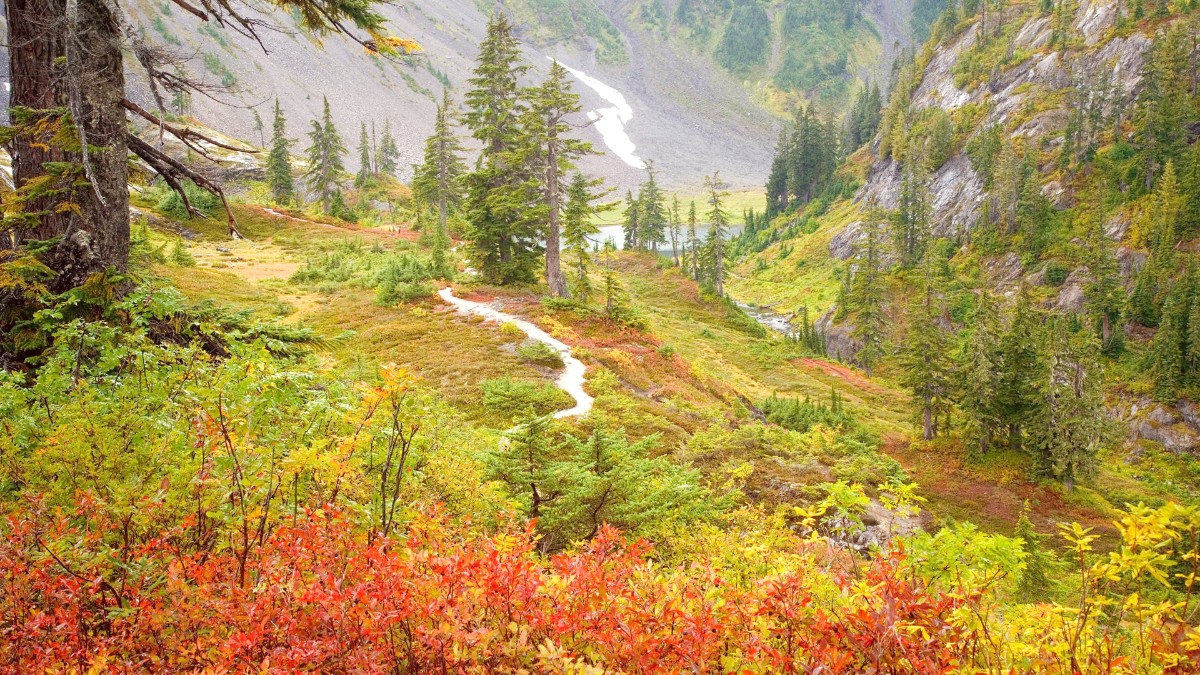
Russian Far East, Russia
Travelers to Kamchatka step into a living geological laboratory, a landscape that continuously changes and evolves. Over 300 volcanoes dot the peninsula, with nearly 30 actively shaping the terrain. Imagine standing at the rim of a steaming crater, feeling the heat from below, and seeing panoramic views that stretch for miles across untouched tundra and forests. Picture observing geysers erupting with powerful sprays of hot water, a spectacle of raw, untamed nature.
Beyond its geological marvels, Kamchatka is a sanctuary for wildlife. It a haven for a vast array of species, from the mighty brown bear to the majestic Steller's sea eagle. For those who seek genuine wildlife encounters in a natural setting, Kamchatka presents an experience that transcends a typical safari.
The weather can change quickly, itineraries may adapt to nature's whims, and access to some of the most spectacular sites depends on specialized transport like helicopters. These aspects become part of the adventure, adding to the sense of accomplishment and the depth of the experience. Each moment here a privilege, a rare glimpse into a world where nature remains truly dominant.
Kamchatka Krai, a federal subject of Russia, has a distinctive global position. It stretches across the Kamchatka Peninsula, an elongated landmass extending southwards into the Pacific Ocean, along with a portion of the adjacent mainland and several offshore islands like Karaginsky and the Komandorsky Islands. The peninsula measures approximately 1,250 kilometers (777 miles) in length, reaching a width of up to 440 kilometers (273 miles) at its broadest point. This geographical isolation has shaped its unique ecological character.
The peninsula lies on the Pacific Ring of Fire, a horseshoe-shaped belt of volcanoes and seismic activity. This geological placement explains Kamchatka's dramatic and dynamic landscape. It is one of the most volcanically active regions on Earth, boasting over 300 volcanoes, with roughly 29 considered active. These volcanoes come in various forms, from perfect conical stratovolcanoes to vast calderas, shaping every aspect of the land. The constant geological activity has also created numerous geothermal features, including geysers, hot springs, and fumaroles, which add to the region's raw, untamed beauty.
Dominant in the central mountain ranges.
Stretching across the northern parts.
Birch and larch found in the south.
Fed by snowmelt and rain, nurturing salmon.
Features cliffs, black sand beaches, and deep bays like Avacha Bay.
Petropavlovsk-Kamchatsky, with a population of around 170,000, is the main entry point and logistical hub for travel on the peninsula. It sits picturesquely on hills overlooking Avacha Bay, framed by the conical shapes of Avachinsky and Koryaksky volcanoes. The city's location highlights the dual nature of Kamchatka – a blend of human settlement against a backdrop of powerful, untamed nature.
Geographical isolation, combined with its challenging terrain, means that large parts of Kamchatka remain accessible only by specialized vehicles, helicopters, or multi-day treks, reinforcing its status as a destination for the truly adventurous.
This remote peninsula attracts photographers with its stunning landscapes, dramatic light, and the raw beauty of its untamed wilderness, offering unique opportunities for striking visual narratives.
This destination invites hikers, photographers, wildlife enthusiasts, and anyone drawn to the planet's wild frontiers. It promises solitude in vast landscapes, moments of connection with the natural world, and lasting memories. Prepare to disconnect from the ordinary and immerse yourself in the extraordinary.
Kamchatka's history is one of exploration, isolation, and strategic importance, shaping its current character and the preservation of its natural environment. Their traditions and deep connection to nature continue to be an important part of Kamchatkan cultural heritage.
Russian exploration began in the late 17th century with Cossack explorers pushing eastward. Vladimir Atlasov, a Cossack commander, led the first documented expeditions in 1697. He established initial Russian outposts and gathered information, opening Kamchatka to Russian influence.
In the early 18th century, Vitus Bering used Kamchatka as his main base for voyages to Alaska and the North Pacific. His expeditions contributed immensely to mapping the region.
The city was founded in 1740, named after Bering's two ships, St. Peter and St. Paul, becoming a significant waypoint in global exploration.
During the Soviet era, Kamchatka became a restricted military zone, limiting civilian access until the early 1990s. This preserved its wilderness.
For centuries, Kamchatka remained a remote outpost. Its strategic position in the North Pacific made it valuable, yet its rugged landscape kept it largely untouched by large-scale industrial development. Without widespread logging, mining, or uncontrolled tourism, the wilderness stayed largely intact.
Kamchatka Krai covers approximately 464,275 sq km, comparable to California.
Low population density means vast, uninhabited wild stretches remain.
The capital city is the main gateway and urban center, offering essential services.
Relies heavily on natural resources like fishing (salmon), growing tourism, and military presence.
Mining activities contribute to the local economy.
Kamchatka operates on the UTC+12 time zone, far ahead of Moscow and similar to New Zealand.